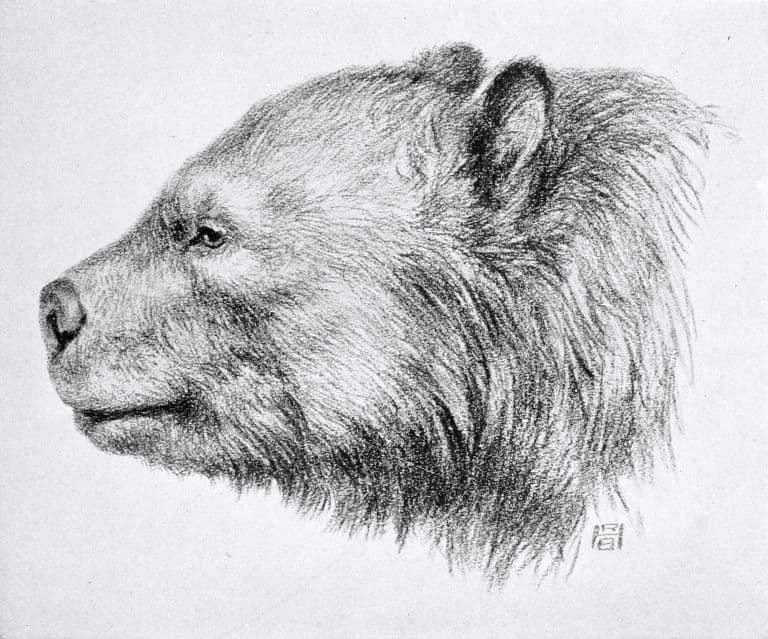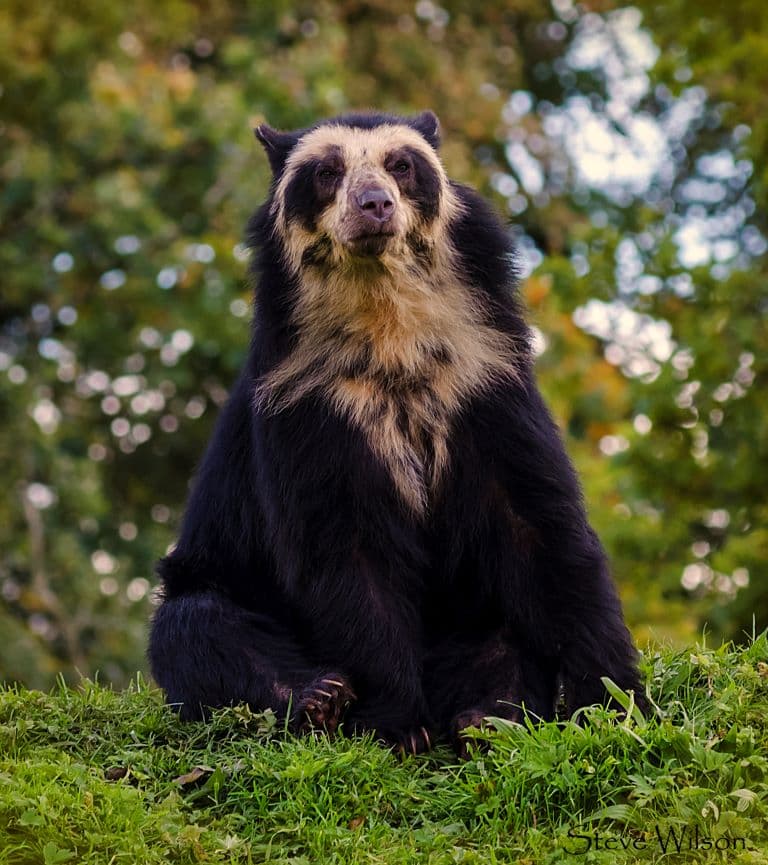Arctotherium Profile
Prehistoric megafauna don’t come much scarier than this. If you thought the North American [short-faced bear] was a force to be reckoned with, this one should give you goosebumps. The largest bear ever known, and the biggest mammalian carnivore on land once roamed South America.

Arctotherium Facts Overview
| Habitat: | Savanna forests |
| Location: | South America |
| Lifespan: | Unknown |
| Size: | Up to 3.5m (11ft) tall when standing, possibly 4.5m (14ft) long |
| Weight: | At least 1600kg (3500lb) |
| Colour: | Unknown |
| Diet: | Omnivorous |
| Predators: | None |
| Top Speed: | Unknown |
| No. of Species: | 5 known |
| Conservation Status: | Extinct |
The heaviest bears around today are the Polar bears, rarely topping out at a chubby 1000kg. a large Arctotherium may have doubled this and certainly exceeded it by a long margin. But why were they so big?
Their size may have come in handy when scavenging carcasses of other predators new to the continent or helped them bring down some of their own. But meat wasn’t the only thing on the menu. Over time, this genus likely faced increasing competition and grew smaller, eventually disappearing for good around the time humans showed up.
Interesting Arctotherium Facts
1. They were probably the most powerful mammalian land predator
The sheer size and weight of this animal exceed any other carnivorous land mammal we know of.
The bear shared its habitat with the [giant ground sloths] and [car-sized armadillos] that occupied South America at the time, and with few other competitors, was able to make use of the continent’s abundance of chunky prey items to grow to enormous proportions.
And enormous they were. The largest of Arctotherium could stand around 3.5 meters tall on its hind legs and would have weighed as much as a black rhino. Aside from being fearsome, this mass would also need a lot of food! 1

2. But they wouldn’t hunt all the time
Remains of Arctotherium angustidens suggest this was a giant omnivore, like most extant bear species, and would have been happy scavenging, hunting, or foraging for fruits and tubers.
The diet of this genus changed over time as species evolved, and while North American bear species seemed to get larger as they evolved, Arctotherium got smaller.
As the millennia passed, species of Arctotherium evolved to have a diet shifted from highly carnivorous in A. angustidens to more diverse and herbivorous diets, perhaps suggesting a reduction in prey availability and an increase in predator competition. 2
3. They weren’t all giants
There are at least five species of Arctotherium described, and the smaller of them were closer to 400kg in weight, still much more massive than the remaining species of bear in South America, the Spectacled bear, which sits at an adorable 120kg.
Being huge would have allowed Arctotherium to stand its ground against other predators and scavenge carcasses from them, as well as bring down its own. The only other large carnivore on the South American continent at the time was Smilodon, so this bear’s size could have been a competitive edge over the cat.
But it would have also limited the flexibility of the species in changing times, and this might be why species in South America trended towards smaller individuals as the vast migration of animals crossed in both directions.
A sudden increase in predators in South America would have put pressure on the genus to eat more plants as prey items became scarce. 3
4. They were only distantly related to their North American cousins
Known as the short-faced bears, both [Arctodus] and Arctotherium originated in North America. There are superficial similarities in the remains of both, and for a long while they were thought to be related, but research now suggests that they evolved these characteristics independently as a response to similar environmental pressures.
The closest extant relative, and the only native species, is the spectacled bear, which still lives in South America, and is significantly smaller.
5. They may have swum to South America
As early arrivals to the South American continent, they may have been present in Central America for a long time, though there are no fossil records to support this yet.
They may also have been competent swimmers, able to hop between islands in the early days of the land bridge formation between the continent, discovering a more or less competition-free garden of Eden and rapidly increasing in size on the abundant meaty herbivores that lived there.
At the time, it seems as though there were no specialised scavengers in the region, suggesting this would have been an easy niche for Actrotherium to fill. 4
6. Still, they had a hard life
One of the largest specimens found was an old male, picked up in Buenos Aires. This was a bear who had been through a lot and was covered in deep wounds, most of which had healed.
At least one of the injuries showed signs of a lengthy battle with infection, and this suggests that life wasn’t easy for the giant bear.
Whether these wounds came from fending off other predators, fighting with rival males, or during a battle with the thumb claw of a [giant sloth] is still a matter of imagination, but it goes to show that even the largest predators of the time had a lot to deal with. 5
7. Nobody knows why they disappeared
Arctotherium, like the North American giant short-faced bears, disappeared before humans arrived on the scene, and it’s not clear why.
Smaller species held out until more recently, with the earliest fossils appearing from around 9000 to 14,000 years back.
Spectacled bears don’t seem to have descended directly from this genus, but likely came over in a separate migration event, and this might have something to do with the dwindling Arctotherium.
Reductions in food and range favoured smaller, more flexible morphologies and the bears we see today represent those that were able to stay competitive in a more restrictive environment. 6
Arctotherium Fact-File Summary
Scientific Classification
| Kingdom: | Animalia |
| Phylum: | Chordata |
| Class: | Mammalia |
| Order: | Carnivora |
| Family: | Ursidae |
| Genus: | Arctotherium |
Fact Sources & References
- CHRISTINE DELL’AMORE (2011), “Biggest Bear Ever Found—”It Blew My Mind,” Expert Says”, National Geographic.
- Charles Q. Choi (2011), “Standing at 11 Feet: World’s Largest Known Bear Unearthed”, Live Science.
- Soibelzon, Leopoldo H (2011), “ Soibelzon, Leopoldo H.; Schubert, Blaine W. (2011) “The Largest Known Bear, Arctotherium angustidens, from the Early Pleistocene Pampean Region of Argentina: With a Discussion of Size and Diet Trends in Bears., 85(1), 69–75. doi:10.1666/10-037.1”, Sci Hub.
- Kieren J. Mitchell (2016), “Ancient mitochondrial DNA reveals convergent evolution of giant short-faced bears (Tremarctinae) in North and South America”, NIH.
- Leopoldo H. (2011), “THE LARGEST KNOWN BEAR, ARCTOTHERIUM ANGUSTIDENS, FROM THE EARLY PLEISTOCENE PAMPEAN REGION OF ARGENTINA: WITH A DISCUSSION OF SIZE AND DIET TRENDS IN BEARS”, Sci Hub.
- Leopoldo H. Soibelzon (2015), “The largest known bear, Arctotherium angustidens, from the early Pleistocene Pampean region of Argentina: with a discussion of size and diet trends in bears”, Cambridge University Press.
